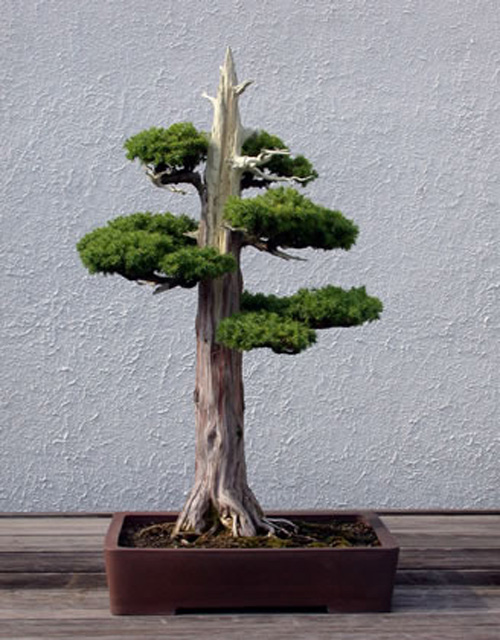
This stately Foemina Juniper (Juniperus chinensis ‘Foemina’) is a pretty good example of what you can do with jin and shari. It is part of the wonderful world class bonsai collection at the National Bonsai and Penjing Museum. It was donated by James (Jim) and Helen Barrett and currently resides in the John Y Naka North American Pavilion.
What are Jin & Shari?
Jin are dead branches (intentionally created or naturally occurring) that can lend of feeling of age and character to a bonsai. Shari is deadwood (sometimes called driftwood) on the trunk of a bonsai. Like jin, shari can be intentionally created or can occur naturally (usually on collected trees).

The carving on this impressively powerful old English Yew (Taxus baccata) occurred at the expert hands of Kevin Wilson. It resides (or resided?) at Nick Peace’s bonsai nursery in Kent, England. The photo was taken by Simon Carr. You can read Simon’s photo-rich, step-by-step article about the transformation of this old tree in Bonsai Today issue 106.
Carving
Most jin & shari is carved in order to impart a natural feeling, or an impressive sculptural look, or a combination of the two (we’ll save the question of naturalistic vs highly stylized bonsai for another time). Both hand tools and power tools can be used to carve. The impressively carved and styled yew in the photo above was carved using power tools; carving this much yew wood (which is very hard, to say the least) by hand, would take almost forever.
Stay tuned
We plan on running a series of posts on creating and carving deadwood. It’s a vast and fascinating topic, so stay tuned. Meanwhile, check out carving maven Francois Jeker’s articles in Bonsai Today 103, 104 & 105 (we’ve sold out of 103 & 104, but 105 is still in stock) and Francois excellent book, Bonsai Aesthetics.